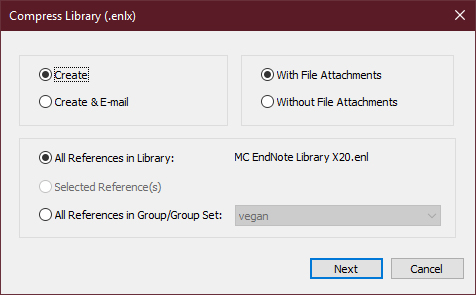|
First time users:
(do not save EndNote libraries in cloud storage - see below) Generally it is recommended that you do not have more To create a new library if you already have one open in EndNote:
|
 |
It is important to keep the .enl file and the .DATA folder together.
To open your library: File > Open Library

There are two ways to save a backup copy of your library
1. The first method of backing up EndNote library is to Save a Copy of your library.
2. Alternatively you can create a compressed version (smaller file  size) of your library that also contains your Data folder
size) of your library that also contains your Data folder
Choose from the following options:
There are some important things you should remember when creating and saving libraries.
1 minute 14 seconds
We acknowledge the Australian Aboriginal and Torres Strait Islander peoples as the first inhabitants of the nation and acknowledge Traditional Owners of the lands where our staff and students, live, learn and work.

This work is licensed under a Creative Commons Attribution-ShareAlike (CC BY-SA) 4.0 International License, unless otherwise noted. Content from this Guide should be attributed to James Cook University Library. This does not apply to images, third party material (seek permission from the original owner) or any logos or insignia belonging to JCU or other bodies, which remain All Rights Reserved.